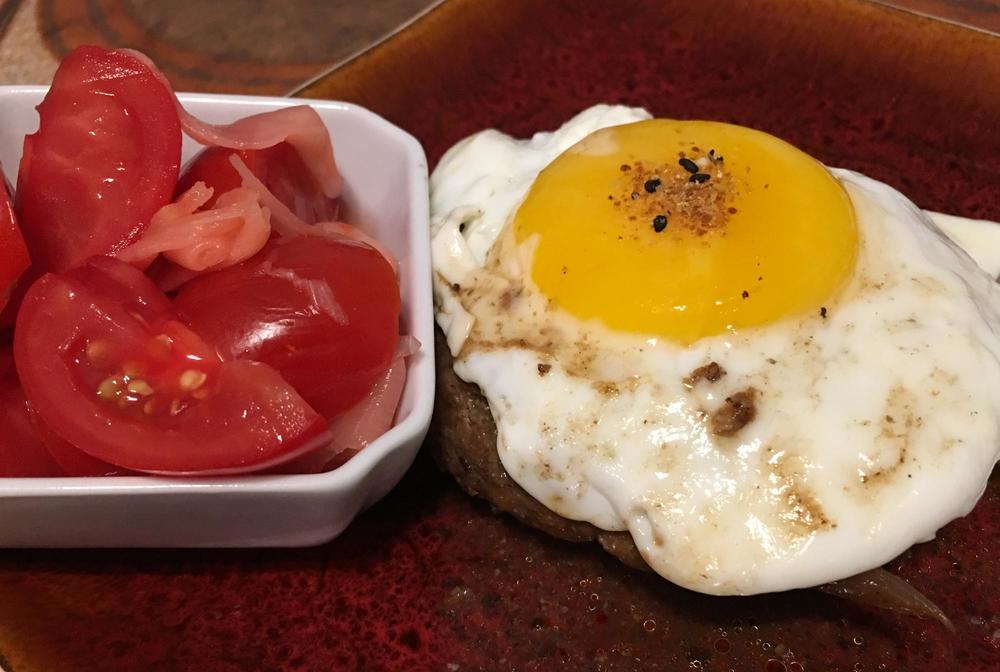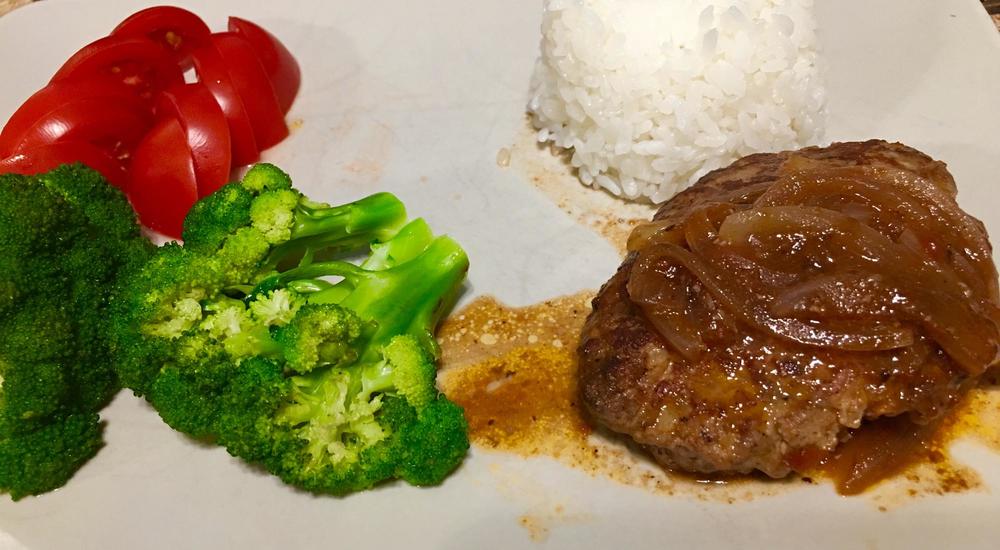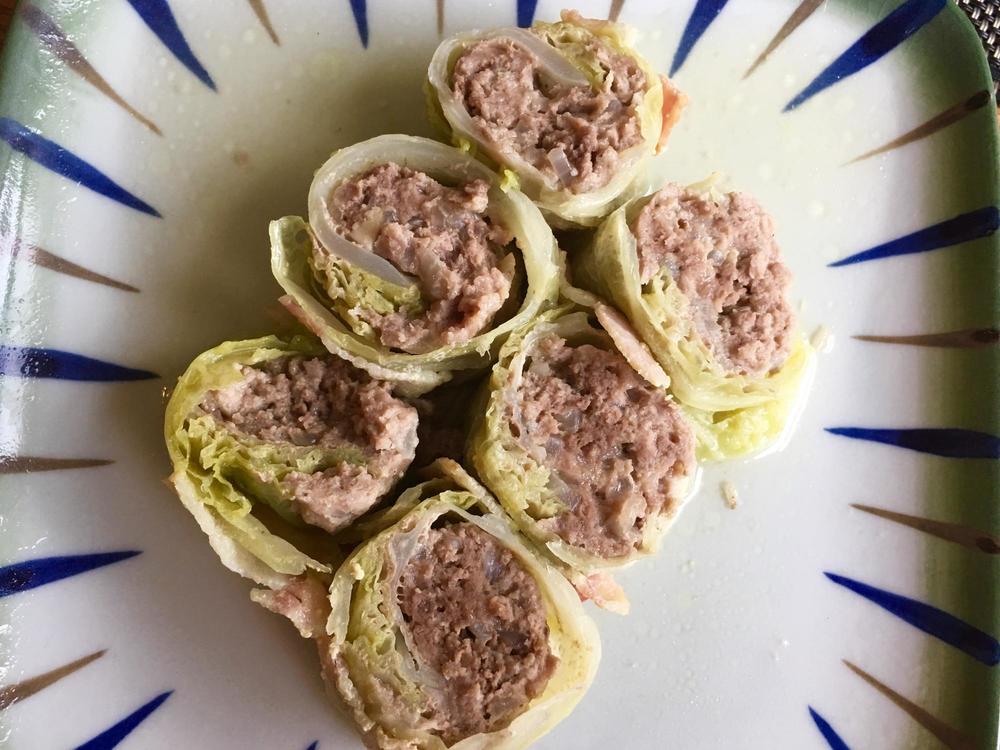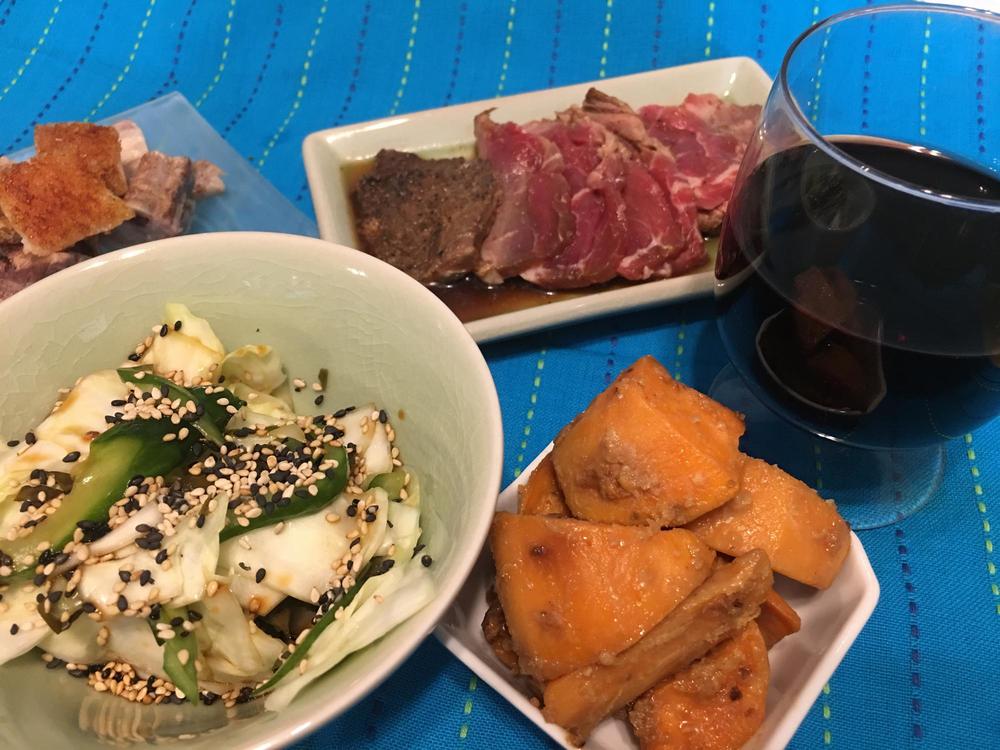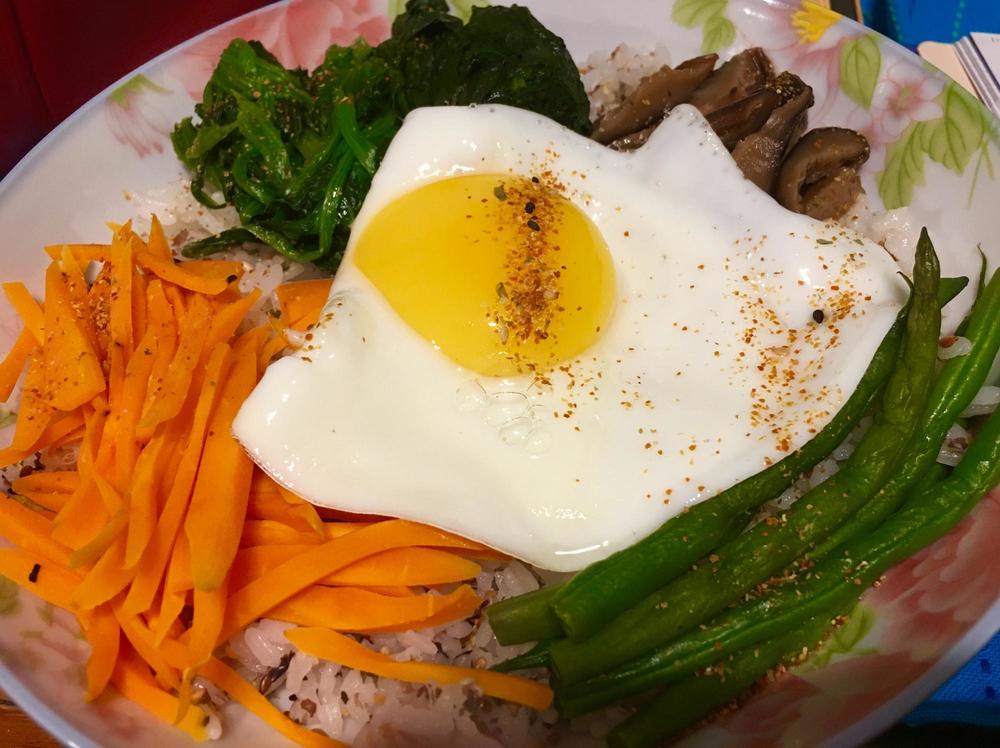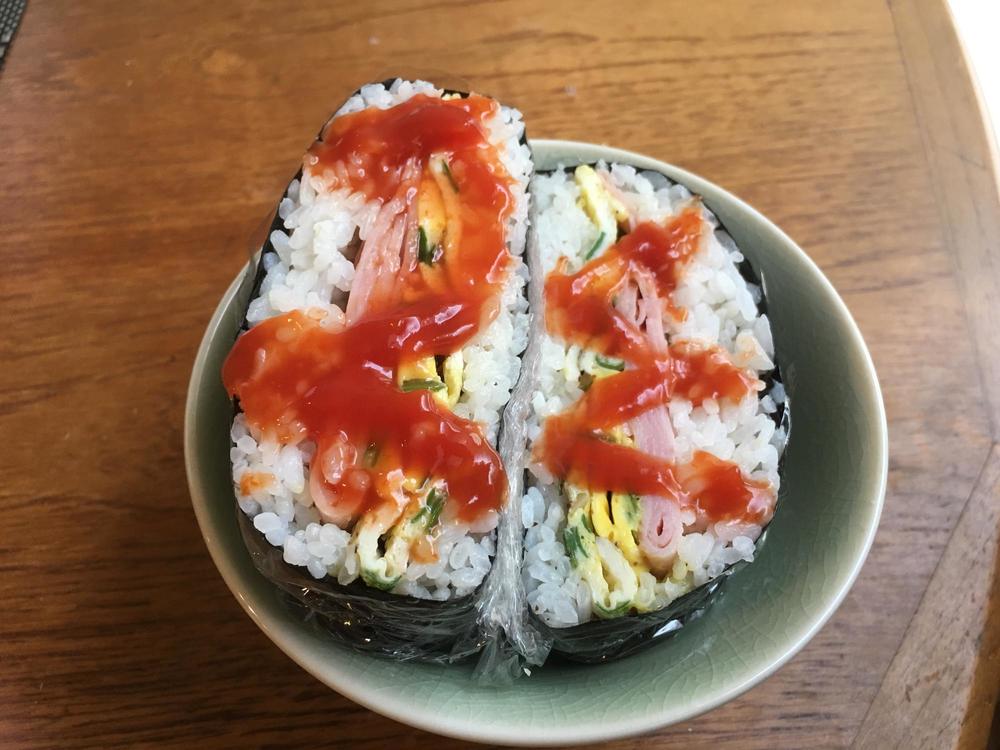-
Posts
22,516 -
Joined
-
Last visited
Content Type
Profiles
Forums
Store
Help Articles
Everything posted by Anna N
-
Taking a page out of Duvel’s book. Nikomi hamburg meets hakkebøf. One of my late husband‘s favourite dishes from his native Denmark was hakkebøf - again a cross between a hamburger and Salisbury steak. A hamburger made with onion gravy and often topped with a fried egg. My interpretation: Beneath the egg is a Japanese hamburger left over from dinner yesterday evening. The side is cocktail tomato wedges tossed with pickled ginger and a little pickled ginger juice.
-
Nope. I hope @liuzhou will chime in again and explain it.
-
Now that I have not seen. But I can’t say that I was looking for it. Trips to the Asian store are infrequent and only rarely leave time for leisurely exploration. But I will be on the lookout for it on my next visit.
-
Thank you. You make it all worthwhile to post these things when I find them. Foraging in my fridge is as challenging and as potentially perilous as I care to get these days.
-
Love the single-headed garlic which you introduced me to. It is becoming more common now in our Asian stores and I have a few bulbs in the house.
-
Nikomi hamburg which has been unappetizingly translated as “stewed hamburger”. However, for someone who is not a fan of hamburgers but is a fan of Salisbury steak this is a tasty compromise. There are probably as many versions as there are Japanese families. In this version ground pork and ground beef are combined with seasonings and binders, formed into oval patties, browned, and then finished in a sweet and sour sauce. Served with rice, steamed broccoli and tomatoes.
-
This will likely only interest a minuscule portion of our membership — those who live in southern Ontario. Still I was startled to learn that pawpaws grow wild here. Here. "These are actually the first wild pawpaws that I've seen," he said. "I first read about pawpaw trees. It just seemed like this exotic tree that seemed too mythical, too bizarre to be true."
-
Hachisu Is very much involved in the effort to preserve Japanese traditions in cuisine and also in other areas. She can be quite rigid at times which as a non-Japanese living in another country I find very irritating. She writes in English for a non-Japanese audience and I think such rigidity is unwarranted. But that’s just my opinion. Also, and this is directed more at the publisher than the author, when you are presenting a cuisine to an audience that is quite unfamiliar with it, and where presentation is so crucial to the cuisine, then you need photographs. You need many, many photographs. You need at least as many photographs as are found in Tokiko Suzuki‘s Japanese Homestyle Cooking. 😊
-
Believe it or not I made an attempt at this. I installed a Japanese keyboard on my iPhone. It was far more painful than my last two root canals so I gave it up.
-
So I am back to report that with a savoy cabbage, at least the one that I had this morning, there is no reason to use water. By just cutting through the centre vein at the stalk end of the cabbage the leaves almost fell off on their own. If you do need to encourage a leaf to peel off you do have to trace the tip of the leaf back to the stalk to make sure you are attempting to remove the leaf that you have loosened from the stalk. Never found cabbage rolls this easy to make in my life. But then I’ve never used savoy cabbage before. Was I just lucky?
-
Indeed you are probably right (I said thickener but I meant the same thing). But it’s still a bit odd and I didn’t realize that until I was questioned about it. I have sent off a request to the blogger to explain it but I do believe she’s travelling in Vietnam at the moment so I may have a while to wait. There is no filler in these cabbage rolls such as rice which seems to be pretty common otherwise.
-
Search me. It is only a tablespoon to 400 g meat so I’m going to assume a thickening agent? Edited to add: I just rechecked the recipe to make sure that I had not misunderstood the use of the corn starch in the feeling rather than in the sauce. I was correct it is part of this filling. It is from a site where the blogger is very responsive so I will ask.
-
Japanese-style cabbage rolls. Really not too different from any other cabbage roll. The Japanese have adapted many western dishes to their own liking. The filling for these is not much more than pork and beef, salt and pepper, and egg and some corn starch. The cooking liquid/sauce is very mildly flavoured chicken stock. They are cut to make it easier to use chopsticks. The recipe that I followed called for nutmeg as a seasoning but I omitted it. It just felt too, too western. 😂😂
-
Not that a ribeye roast is all that likely in the near future but I would still love to know how many kg it weighed.
-
Pickled cabbage, leftover roast pork, beef tataki, red wine and sweet potatoes. A fridge cleaning exercise.
-
-
So I open to a page randomly. It happens to be page 222. There are two recipes on this page: Rolled Egg Omelet and Egg Threads. I know these as: Tamagoyaki and Kinshi Tamago. At no time does she call them by this English rendition of their Japanese name. But this is the name that you can look them up as in most books and certainly on the Internet. (Translation was probably a poor choice of words on my part.) Edited to add: “Transliteration” would have made my complaint clearer. The same.
-
On this occasion I only wanted to test the theory. The cabbage was used for a quick pickle. But I will be making the cabbage rolls as per the recipe I linked to a soon as I can get the necessary other ingredients. I have made traditional European type cabbage rolls filled with beef and/or pork and I have made Japanese style filled with ground chicken.
-
And I had a quick read through the comments and was taken by the one that suggested rinsing the pasta first to reduce the foam.
-
I can barely contain my excitement about this next tip that I am going to share. It will be of interest to those who like to make cabbage rolls. There is an easier way to get those leaves to separate! I just did it and it works. It requires patience, gentleness and running water. Think in terms of peeling hard boiled eggs under the tap. You will have to wade your way down to the appropriate section in this recipe link. Here. Although the instructions here suggest that you aim the water stream at the stem end of the leaves, I found it went faster if I attempted to aim the stream at any part of the leaf that was showing a willingness to separate. It does require patience but I found it so much better than dealing with hot water or hot cabbage leaves. After you separate the leaves you still need to blanch them and soften them before you can roll them. My suspicion is that a savoy cabbage would work even easier with this method. But it’s just a suspicion. I have savoy cabbage on my next grocery list.
-
I have broad shoulders. Everybody blames me for everything. But I would like your take on the book. I was somewhat disappointed and then I tried to be a little bit more open-minded and now I’m not sure where I stand on it. One of the most annoying things I found was that she does not use English translation of the recipe titles. I like to look up recipes and see how other people do them or write them or illustrate them. Without that English translation…
-
This might interest you although I am not giving it any experiential kudos. I haven’t cooked a lot of pasta any way for a while but if I were to do so I think I would start at that link.
-
-
@liuzhou Please, please reassure me that the reunion took place in the restaurant. Surely nobody would attempt that at home! It all looks so delicious.
-
Thank you. The recipe does look delicious. But the thing I noticed most about it was the notation that much of it could be made ahead of time. Not sure what it is with me these days but I do like to get well ahead of my shortened battery life. 😂



